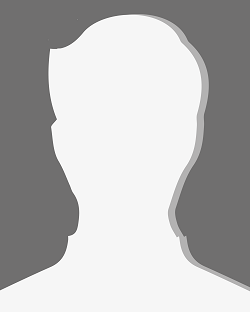
Movement disorders
Movement disorders

The Movement Disorders Unit is focused on understanding the physiopathological mechanisms responsible for different movement disorders, arising from both central and peripheral nervous system dysfunctions. We are involved in the clinical and neurophysiological validation studies on safety and efficacy of innovative therapeutic strategies, both in clinical practice and in experimental settings.
We are studying several animal models of human acquired and inherited diseases in order to characterize underlying physiopathological mechanism and to provide a sensitive model to verify the response to experimental therapies. Further, we are committed in the translation process of these new therapeutic approach in human pathology, like the deep brain stimulation in several basal ganglia disorders or lentiviral hematopoietic stem cell gene therapy in metachromatic leukodystrophy.
Research activity
Notably we are studying the functional recovery after botulinum toxin type A (BT-A) therapy in patients with focal spasticity in multiple sclerosis (MS), the tuning of the treatment of neurogenic bladder by BT-A injection into the detrusor muscle, as well as the cortical excitability modifications in dystonic diseases. We are studing the transcranial magnetic stimulation (TMS) effect on the exteroceptive suppression (“geste antagoniste”) in cervical dystonia (CD). We are also keeping on our animal neurophysiological studies in several models of experimental peripheral neuropathy, like the nervous regeneration after crush. However, neurophysiological measurements of nerve regeneration still need a gold standard method. We are exploring whether the association of classical neurophysiological tests and stimulated single fiber electromyography (SFEMG) may contribute to better describe axonal fibers regeneration in experimental models.
Mazzara PG, Massimino L, Pellegatta M, Ronchi G, Ricca A, Iannielli A, Giannelli SG, Cursi M, Cancellieri C, Sessa A, Del Carro U, Quattrini A, Geuna S, Gritti A, Taveggia C, Broccoli V. Two factor-based reprogramming of rodent and human fibroblasts into Schwann cells. Nat Commun. 2017 Feb 7; 8:14088.
Butera C, Colombo B, Bianchi F, Cursi M, Messina R, Amadio S, Guerriero R, Comi G, Del Carro U. Refractory chronic migraine: is drug withdrawal necessary before starting a therapy with onabotulinum toxin type A? Neurol Sci. 2016 Oct;37(10):1701-6.
Sessa M, Lorioli L, Fumagalli F, Acquati S, Redaelli D, Baldoli C, Canale S, Lopez ID, Morena F, Calabria A, Fiori R, Silvani P, Rancoita PM, Gabaldo M, Benedicenti F, Antonioli G, Assanelli A, Cicalese MP, Del Carro U, Sora MG, Martino S, Quattrini A, Montini E, Di Serio C, Ciceri F, Roncarolo MG, Aiuti A, Naldini L, Biffi A. Lentiviral haemopoietic stem-cell gene therapy in early-onset metachromatic leukodystrophy: an ad-hoc analysis of a non-randomised, open-label, phase ½ trial. Lancet. 2016 Jul 30;388(10043):476-87.
Ricca A, Rufo N, Ungari S, Morena F, Martino S, Kulik W, Alberizzi V, Bolino A, Bianchi F, Del Carro U, Biffi A, Gritti A. Combined gene/cell therapies provide long-term and pervasive rescue of multiple pathological symptoms in a murine model of globoid cell leukodystrophy. Hum Mol Genet. 2015 Jun 15;24(12):3372-89.
De Ceglia R, Chaabane L, Biffi E, Bergamaschi A, Ferrigno G, Amadio S, Del Carro U, Mazzocchi N, Comi G, Bianchi V, Taverna S, Forti L, D'Adamo P, Martino G, Menegon A, Muzio L. Down-sizing of neuronal network activity and density of presynaptic terminals by pathological acidosis are efficiently prevented by Diminazene Aceturate. Brain Behav Immun. 2015 Mar; 45:263-76.
Riva N, Chaabane L, Peviani M, Ungaro D, Domi T, Dina G, Bianchi F, Spano G, Cerri F, Podini P, Corbo M, Del Carro U, Comi G, Bendotti C, Quattrini A. Defining peripheral nervous system dysfunction in the SOD-1G93A transgenic rat model of amyotrophic lateral sclerosis. J Neuropathol Exp Neurol. 2014 Jul;73(7):658-70.
Bianchi F, Cursi M, Ferrari M, Salonia A, Amadio S, Comi G, Danuser H, Del Carro U, Mattei A. Quantitative EMG of external urethral sphincter in neurologically healthy men with prostate pathology. Muscle Nerve. 2014 Oct;50(4):571-6.
Amadio S, Houdayer E, Bianchi F, Tesfaghebriel Tekle H, Urban IP, Butera C, Guerriero R, Cursi M, Leocani L, Comi G, Del Carro U. Sensory tricks and brain excitability in cervical dystonia: A transcranial magnetic stimulation study. Mov Disord. 2014 Aug;29(9):1185-8.
Biffi A, Montini E, Lorioli L, Cesani M, Fumagalli F, Plati T, Baldoli C, Martino S, Calabria A, Canale S, Benedicenti F, Vallanti G, Biasco L, Leo S, Kabbara N, Zanetti G, Rizzo WB, Mehta NA, Cicalese MP, Casiraghi M, Boelens JJ, Del Carro U, Dow DJ, Schmidt M, Assanelli A, Neduva V, Di Serio C, Stupka E, Gardner J, von Kalle C, Bordignon C, Ciceri F, Rovelli A, Roncarolo MG, Aiuti A, Sessa M, Naldini L. Lentiviral hematopoietic stem cell gene therapy benefits metachromatic leukodystrophy. Science. 2013 Aug 23;341(6148):1233158.
Del Carro U, Fiorina P, Amadio S, De Toni Franceschini L, Petrelli A, Menini S, Boneschi FM, Ferrari S, Pugliese G, Maffi P, Comi G, Secchi A. Evaluation of polyneuropathy markers in type 1 diabetic kidney transplant patients and effects of islet transplantation: neurophysiological and skin biopsy longitudinal analysis. Diabetes Care. 2007. 30(12):3063-9.
Pluchino S, Quattrini A, Brambilla E, Gritti A, Salani G, Dina G, Galli R, Del Carro U, Amadio S, Bergami A, Furlan R, Comi G, Vescovi AL, Martino G. Injection of adult neurospheres induces recovery in a chronic model of multiple sclerosis. Nature. 2003. 422(6933):688-94.


